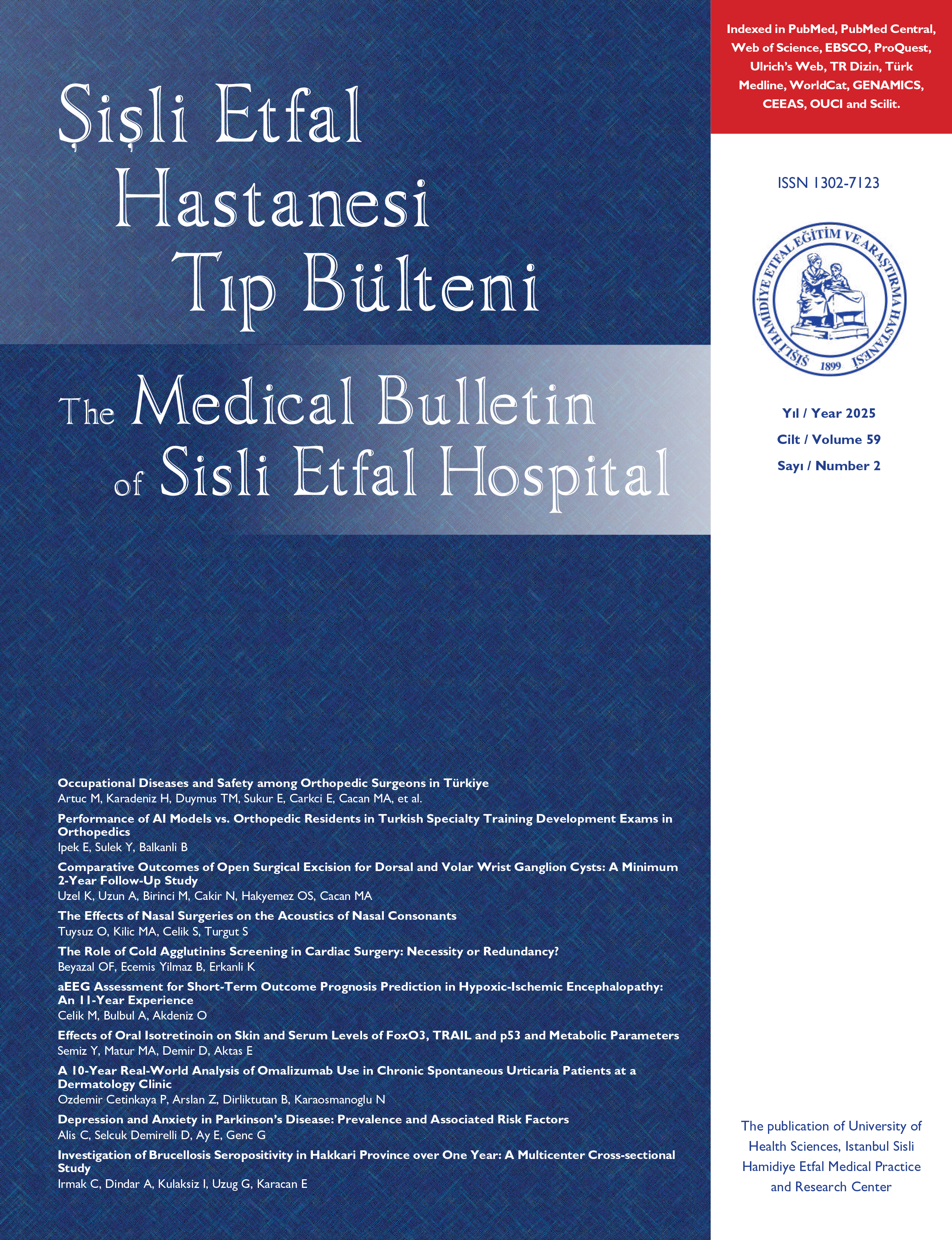
The treatment of tibia diaphyseal fractures with locked intramedullary nailing; midterm results
Onat Üzümcügil, Ahmet Doğan, Merter Yalçınkaya, Mirza Zafer Dağtaş, Nikola Azar, Erhan Mumcuoğlu, Yavuz Selim KabukçuoğluDepartment of Orthopedics and Traumatology, T.C. Health Ministry Istanbul Training and Research Hospital, Istanbul, TurkeyObjectives: The evaluation of the clinical and radiological midterm results of the patients with tibia diaphysis fractures treated by locked intramedullary nails.
Methods: 67 patients with tibia diaphysis fracture who were treated with locked intramedullary nail (45 male, 22 female; mean age 36,9; range 16 to 69) were included in the study. The fractures were on the right side in 42 patients and on the left side in 25 patients. The mean period between the operation and the onset of the fracture was 12 days (range 1-35 days) and the mean follow-up period was 46,5 months (range 6 to 123 months). The results were evaluated according to Johner-Wruhs criteria.
Results: In our study group, the average time to union was 21,1 weeks (median 18 weeks, range 6 to 36 weeks). According to the Johner-Wruhs criteria; of 67 patients, the results were excellent in 36 patients (53,7%), good in 17 patients (25,3%), fair in 7 patients (%10,5) and poor in 7 patients (10,5%). 14 patients (20,9%) with malalignment and 12 patients (17,9%) with restriction of adjacent joint motion were also reported.
Conclusion: Malalignment and the restriction of adjacent joint motion were found to be the two important factors responsible of the decrease in the clinical satisfaction rates. We believe that in order to fix those two factors; proper reduction of the fracture during the primery surgery, welldetermination of the cases necessiating statical locking, much care taken about dinamisation and weight bearing times and an appropriate rehabilitation program are mandatory.
Tibia diyafiz kırıklarının kilitli intramedüller çivileme ile tedavisinde orta dönem sonuçlarımız
Onat Üzümcügil, Ahmet Doğan, Merter Yalçınkaya, Mirza Zafer Dağtaş, Nikola Azar, Erhan Mumcuoğlu, Yavuz Selim KabukçuoğluT.C. Sağlık Bakanlığı İstanbul Eğitim Araştırma Hastanesi, 1. Ortopedi ve Travmatoloji, İstanbulAmaç: Tibia diafiz kırığı nedeniyle kilitli intramedüller çivi uygulanan hastaların klinik ve radyografik orta dönem sonuçlarının değerlendirilmesi.
Çalışma planı: Tibia diafiz kırığı nedeniyle kilitli intramedüller çivi ile internal tespit uygulanan 67 hasta (45 erkek, 22 kadın; ort. yaş 36,9; dağılım 16-69) çalışmaya dahil edildi. Kırıklar 42 hastada sağ, 25 hastada ise sol tarafta idi. Hasta grubumuzda, kırığın oluş anından ameliyata kadar geçen süre ortalama 12 gün (dağılım 135 gün), ortalama takip süresi ise 46,5 ay (dağılım 6123 ay) idi. Takip sonuçları Johner ve Wruhs kriterlerine göre değerlendirildi.
Sonuçlar: Çalışma grubumuzda ortalama kaynama süresi 21,1 hafta olarak bulundu (medyan 18 hafta, dağılım 636 hafta). Johner ve Wruhs kriterlerine göre 67 olgunun 36sında (%53,7) mükemmel, 17sinde (%25,3) iyi, 7sinde (%10,5) orta ve 7sinde (%10,5) kötü sonuç elde edildi. 67 olgunun 14ünde (%20,9) açısal dizilim kusuru, 12sinde (%17,9) komşu eklem hareket kısıtlılığı görüldü.
Çıkarımlar: Bu çalışma grubunda klinik başarı oranını düşüren en önemli iki faktörün açılı kaynama ve komşu eklem hareket kısıtlılığı olduğu görüldü. Bu iki problemin de, primer cerrahi esnasında kırık redüksiyonuna dikkat edilmesi, sistemin statik kilitlenmesini gerektiren olguların iyi belirlenmesi, dinamizasyon ve yük verme zamanına daha dikkatli karar verilmesi, aynı zamanda bu hastaların düzgün bir rehabilitasyon programına alınması gerekliliği ortaya çıkmıştır.
Manuscript Language: Turkish



















